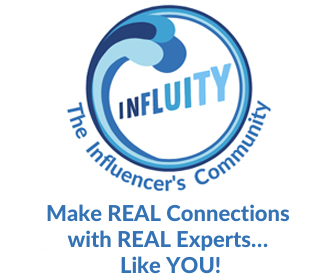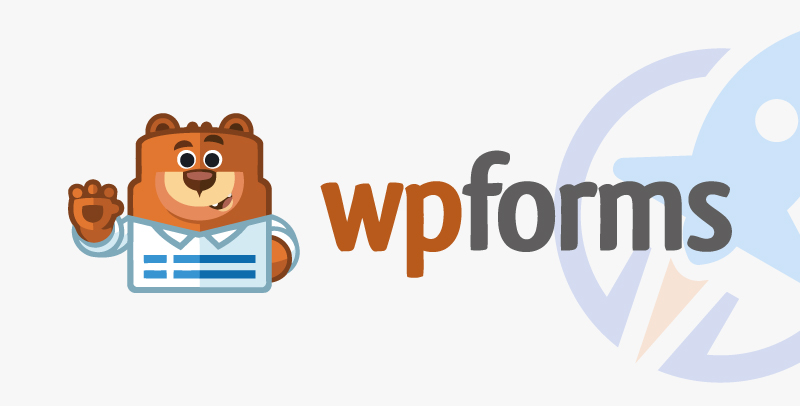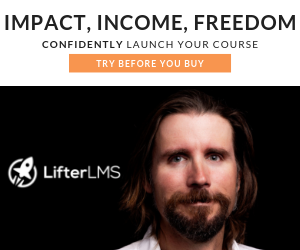1. What inspired you to write this book?
The inspiration to write this book came to me during a profound
moment of reflection during a challenging period. With the onset of the
pandemic, I experienced the loss of my father to heart disease and a
brother-in-law to Covid-19. As I sat at their funerals, surrounded by grief and
contemplation, I couldn’t shake the question of what kind of legacy I was
leaving behind for my children and future generations. It was during those
poignant moments of loss and reflection that I felt compelled to begin
documenting my own journey and insights, leading to the creation of
“Seeking My Legacy.”
2. What exactly is it about
and who is it written for?
“Seeking My Legacy” is a deeply
personal exploration of the pursuit of a meaningful legacy. Through heartfelt
anecdotes and insightful reflections, I share my journey navigating life’s
challenges and triumphs, from pursuing dreams and balancing career and family
to delving into my Christian faith as a member of the Church of Jesus Christ of
Latter-day Saints. The book serves as a guiding light, encouraging readers to
reflect on their own life narratives and the footprints they’re leaving behind.
It’s a narrative rich with inspiration and wisdom, aimed at empowering
individuals to craft their own legacies with purpose and intention.
3. What do you hope readers will get out
of reading your book?
The primary audience I envision for
“Seeking My Legacy” are Christian men and women who are contemplating
the legacy they’re leaving behind. Whether they’re facing the challenges of
balancing career and family, navigating relationships, or seeking to align
their lives more closely with their faith, this book offers insights and
inspiration to guide them on their journey. It’s for those who want to live
with purpose and intentionality, and who understand the importance of leaving a
meaningful legacy that reflects their values and beliefs.
4. How did you decide on your book’s title and
cover design?
The title “Seeking My Legacy” came
to me while reflecting on the impactful lives of loved ones during recent
funerals. This title sparked a personal journey into defining my own legacy and
contemplating the imprint I leave on the world. As I chose the book cover, I
envisioned myself writing at a desk adorned with photographs of my family,
whose presence inspired and surrounded me throughout this process. The cover
design vividly captures the emotions and images that fueled my writing,
reflecting the essence of my journey and the heartfelt connections that define
my legacy.
5. What advice or words of wisdom do you have
for fellow writers – other than run!?
My advice to fellow authors is simple: keep
writing relentlessly, no matter the challenges. If you have a voice, let it
resonate. Writing a book is demanding, and getting it published is even more
so. I’ve always dreamed of seeing my name in print, and while I’ve been
fortunate to have several research articles published in academia, achieving
publication in personal writing took years of perseverance. Don’t lose
heart—persist and never give up on your dream.
6. What trends in the book world do you see —
and where do you think the book publishing industry is heading?
In today’s book world, diversity in voices and
representation is a prominent trend, with readers increasingly seeking stories
that reflect varied cultures and experiences. Digital formats like e-books and
audiobooks are gaining popularity due to their convenience, especially among
younger audiences. There’s also a growing emphasis on sustainability, prompting
publishers to adopt eco-friendly practices in book production. Looking forward,
the industry is expected to continue expanding in digital publishing while
maintaining a strong presence in traditional print. Adapting to technological
advancements and meeting diverse reader preferences will be key to the
industry’s future growth and relevance.
7. Were there experiences in your
personal life or career that came in handy when writing this book?
My personal life experiences have
significantly influenced the subject matter of this book. In fact, they are the
very foundation upon which “Seeking My Legacy” is built. Throughout
the book, I draw upon the challenges I’ve faced and the obstacles I’ve overcome
in various roles: as an educator, a mother, a wife, and a grandmother. These
experiences have deeply shaped my perspective on life, faith, and the pursuit
of a meaningful legacy. Each anecdote and reflection in the book is rooted in
my real-life experiences, making it a deeply personal and authentic exploration
of the themes presented.
8. How would you describe your writing style?
Which writers or books is your writing similar to?
When discussing my writing method, I emphasize
clarity and directness in conveying information, ensuring that complex topics
are accessible to readers. I maintain a conversational tone that blends
professionalism with a friendly approach, integrating personal insights and
experiences to add authenticity and depth to my work. This style aims to engage
readers effectively while delivering key points succinctly, reflecting my
commitment to making content both informative and relatable.
My writing style, akin to “The Last
Lecture” by Randy Pausch, focuses on clarity and directness to convey
meaningful insights. Like Pausch, I aim to engage readers through a
conversational tone that blends personal experiences with professional
knowledge. This approach allows me to deliver key messages effectively while
maintaining authenticity and depth, much like Pausch did in sharing his life
lessons and wisdom in a relatable and impactful manner.
9. What challenges did you overcome in the
writing of this book?
In writing a book reflecting on my journey and
legacy, I faced several challenges. Balancing personal reflection with
professional insights was key, ensuring the narrative remained relatable while
conveying expertise. Structuring the book to seamlessly integrate personal
anecdotes with broader themes of perseverance and achievement required careful
planning and revision. Additionally, navigating the delicate balance between
transparency and privacy regarding personal experiences, particularly within a
family context, was a sensitive yet essential aspect of the writing process.
10. If people can buy or read one book this
week or month, why should it be yours?
If readers are considering a book to buy or
read this week or month, mine should be at the top of their list because it
offers a heartfelt journey through my personal and professional experiences.
It’s not just about sharing insights; it’s about connecting with readers on a
deeper level, inspiring them to persevere through challenges and embrace their
own journey of growth. With a blend of authenticity and expertise, my book aims
to ignite a sense of purpose and possibility, urging readers to reflect on their
legacy and find inspiration in every chapter.
About The Author: Dr. Stephanie West is an accomplished educator and leader
passionate about educational excellence and innovation. She earned her Ed.D. in
Organization Leadership with a focus on Educational Leadership from Grand
Canyon University in 2019, following her B.A. in Elementary Education from
Arizona State University in 2001. Dr. West’s educational journey includes an
M.Ed. in Educational Administration in 2013 and an M.Ed. in Curriculum and
Instruction with a specialization in Reading in 2006, both from Grand Canyon
University. Her commitment to professional growth is evident through
certifications in K-8 Elementary Education, K-12 Principalship, Superintendent
Endorsement, K-12 Reading Specialist, Structured English Immersion, and Early
Childhood Education. As an Assistant Adjunct Professor at Grand Canyon
University and Scottsdale Community College, she shapes future educators
through teaching and guidance. Dr. West’s contributions extend to academic
publications and professional development presentations. Her personal
achievements are complemented by her cherished family—a husband, Scott, who is
her steadfast support, and four children, including a son serving in the Army,
as well as loving daughter-in-law and son-in-laws, and nine adored
grandchildren, who embody kindness and service. Please see: http://covenantbooks.com/books/?book=seeking-my-legacy or https://www.facebook.com/profile.php?id=61559631802956
Interview With author Vicki
Ostenfeld
Another Time
1.
What inspired you to write this book?
While I have wanted to
write a novel since I was about ten years old, when I won a writing competition
at school, it has taken me a long time to realise that ambition. Previous
attempts were abandoned, mainly because life always got in the way, but when I
retired from teaching in August 2022, I decided that it was now or never, so I
started writing seriously.
In the last few years
before I started writing this book, I began to think about the people from the
community where I grew up and how their lives were just as interesting as the
lives of many of the characters that I have read about in books. So why not use
my personal experience of life in a small, isolated, Australian country town in
the middle of the 20th Century to realise my ambition to become a
writer? Naturally, my characters are all figments of my imagination, but many
of them are inspired by people I’ve known, or known of. I wanted to tell their
stories in a respectful way that reveals that life is just as interesting and
challenging in a small country town in Tasmania as it is in New York or London.
Going by the positive feedback that I’ve had from others who grew up in the
same place and time as I did, I believe that I have succeeded.
2.
What exactly is it about and who is
it written for?
My book is about a
young couple (Frank and Amy) who meet and fall in love in Cairns (QLD,
Australia) in the later stages of WW2. They have very different ambitions in
life, which are not compatible, and this obstacle, along with hostility towards
Amy from Frank’s older brother (Henry), leads to their separation. Frank
returns to his family’s farm in Tasmania and, on the rebound from Amy, finds
himself pushed into marrying Imogen, a young woman of whom his family approves
but whom Frank doesn’t love. The rest of the story, which spans 50 years,
reflects the consequences of marrying for duty instead of love, and includes
the themes of loss, fidelity and betrayal, loyalty, and ‘doing the right thing’.
It also examines the effects that one generation’s choices can have on future
generations. The rapidly shifting moral landscape of the second half of the 20th
Century provides an addition dimension to the story.
Originally, my target
audience was adult women, but, once again, going by the feedback that I’ve
received, many adult men are also enjoying my book, so I suppose it is actually
written for anyone, male or female, who enjoys a good story.
3.
What do you hope readers will get out of reading
your book?
First of all, I hope
my readers will just enjoy a good yarn that they don’t have to have a literary
education to understand. But I also hope that they will develop a wider
understanding of what society was like in the place and time in which the novel
is set and the limitations and expectations that were placed on women – and
men.
While I would not call
my novel ‘feminist’, I hope that the contrasts between Amy, Imogen and the
other female characters will lead my readers to reflect on how much women’s
roles in society have changed in the last 70 years. And, hopefully, my readers
will feel some sympathy for the characters, male and female, and how their
lives played out, mainly because of the expectations that society placed upon
them.
4.
How did you decide on your book’s title and cover
design?
The title popped into
my head one evening when my husband and I were discussing the different norms
that applied in the second half of the 20th Century, which I have
tried to reveal in my novel. I remarked that it was ‘another time’ then and
that’s what stuck – it seemed like the correct title for my book.
The cover design is
meant to reflect the tropics and Cairns, where Frank and Amy met, and
WW2, when Frank and Amy met. The planes on the cover are Catalinas,
which I chose because there were two Catalina Squadrons based in Cairns during
WW2.
5.
What advice or words of wisdom do you have for fellow
writers – other than run!?
Just keep slogging
away. If you have an idea for a story, write it down. If a publisher rejects
your work, keep trying or self-publish. Publishers don’t always recognise a
good story – remember that J.K.Rowling was rejected 12 times before the 13th
publisher accepted her first book in the Harry Potter series.
6.
What trends in the book world do you see — and where
do you think the book publishing industry is heading?
I admit that I was
previously somewhat pessimistic about the future of literature with what I
perceived as younger people’s lack of interest in reading novels and their lack
of concentration caused by spending so much time on the social media. However,
since my book was published, I have become aware of the many, many young people
who are all over the social media promoting literature of all kinds to their
friends and followers. The emerging backlash against the whole on-line, digital
experience is also encouraging with so many young people seeking entertainment
in the analogue world. I have faith in the future of literature.
The book publishing
industry itself is being challenged by modern technology, the ease of
self-publishing and publishers’ own attitudes to publishing new authors. I
recently read that a large publishing firm had declared that it wasn’t going to
publish any new authors or any new books unless they were sure that the book
would be a best seller – in other words, they weren’t going to take any risks.
If this continues, publishers might find themselves by-passed and obsolete in
the future – they might not be willing to take risks in publishing new authors
and books, but are they willing to risk their own demise caused by their own
policies?
7.
Were there experiences in your personal life or
career that came in handy when writing this book?
I believe that one of
the reasons why I succeeded in this attempt at writing a novel is that I now
have a master’s degree in English, applied linguistics and psychology and have
taught literature for 17 years. Studying the work of other authors as closely
as I did as a teacher of literature has given me a lot of insights into how
it’s done, which I didn’t have before, and the self-discipline required to
successfully complete a master’s degree was a useful attribute in writing a
novel. Please don’t write me off as an intellectual snob, I don’t think that it
is necessary to have a university degree to write a good book – there are
numerous examples of great novels written by outstanding authors who
didn’t/don’t have a formal education – I’m merely saying that, in my case, my
education helped.
As previously
mentioned, I have drawn on my own personal experience growing up in a small
country town as inspiration for many of the events and characters in my
book.
8.
How would you describe your writing style? Which
writers or books is your writing similar to?
My writing style is
straight-forward. I tell the story in a way that is easily understood and can
be enjoyed by everyone. I chose a third person omniscient narrator so that I
could reveal the thoughts and feelings of all of my characters where appropriate.
It was especially important that the reader was aware of what the three main
characters (Frank, Amy and Imogen) were thinking and feeling and how they were
reacting to the other characters and events. There is a lot of dialogue in the
book, where I have tried to portray the characters’ mode of speaking as
authentically as possible – this is a useful tool which reflects both the
sociolect and dialect of the characters.
If I were to compare
my book to other books that I feel that mine is similar to, my first choices
would be Colleen McCullough’s The Thorn Birds or Robert James Waller’s Bridges
of Madison County – both of which, like my book, deal with love and
difficult choices which don’t necessarily lead to happy endings for the
characters.
9.
What challenges did you overcome in the writing of
this book?
My biggest challenge
was having confidence in my work/writing. I was convinced that my book wouldn’t
appeal to anyone and that it was very ‘amateurish’. It was very reassuring when
I eventually allowed a few people to read it and received positive feedback. I
was also very insecure about sending it to publishers – no-one likes rejection.
Although it was rejected by some publishers, it was also accepted and
published, and that’s all that counts in the end.
10. If people can buy or read one book this week
or month, why should it be yours?
If you want to read a
ripping, good yarn that will tear at your heart-strings, read my book. It’s a
story that many people will enjoy and even relate to on some level. There’s
also a possibility that you’ll learn something about Australia, Australian history
and the challenges that faced women who wanted to be something other than
‘housewives’ in the middle of the last century.
A good read that
touches on social, historical and emotional themes.
About The Author: Vicki Ostenfeld was
born in Tasmania, Australia and grew up in a small country town in the middle
of the 20th Century. She now lives in Denmark with her husband whom
she met in Cairns, Queensland where she was working as a customs officer
(border control). After moving to Denmark, Vicki attended Aarhus University
where she obtained a Bachelor of English and a master’s degree. Vicki taught
English at a Danish adult education high school for 17 years before retiring in
2022 when she began writing her first novel. Vicki has both Australian and
Danish citizenship. Please see: Vicki Ostenfeld (ampbk.com)
Need PR Help?
Brian
Feinblum, the founder of this award-winning blog, with over 3.9 million page
views, can be reached at [email protected] He is available to help authors promote their story,
sell their book, and grow their brand. He has over 30 years of experience in
successfully helping thousands of authors in all genres. Let him be your
advocate, teacher, and motivator!
About Brian
Feinblum
Brian Feinblum should be
followed on www.linkedin.com/in/brianfeinblum. This is
copyrighted by BookMarketingBuzzBlog ©2024. Born and raised in Brooklyn, he now
resides in Westchester with his wife, two kids, and Ferris, a black lab rescue
dog, and El Chapo, a pug rescue dog. His writings are often featured in The
Writer and IBPA’s The Independent. This
award-winning blog has generated over 3.9 million pageviews. With 4,900+ posts
over the past dozen years, it was named one of the best book marketing blogs by
BookBaby http://blog.bookbaby.com/2013/09/the-best-book-marketing-blogs and recognized by Feedspot in 2021 and 2018
as one of the top book marketing blogs. It was also named by
www.WinningWriters.com as a “best resource.” For the past three decades,
including 21 years as the head of marketing for the nation’s largest book
publicity firm, and director of publicity positions at two independent presses,
Brian has worked with many first-time, self-published, authors of all genres,
right along with best-selling authors and celebrities such as: Dr. Ruth, Mark
Victor Hansen, Joseph Finder, Katherine Spurway, Neil Rackham, Harvey Mackay,
Ken Blanchard, Stephen Covey, Warren Adler, Cindy Adams, Todd Duncan, Susan
RoAne, John C. Maxwell, Jeff Foxworthy, Seth Godin, and Henry Winkler. He
hosted a panel on book publicity for Book Expo America several years ago, and
has spoken at ASJA, Independent Book Publishers Association Sarah Lawrence
College, Nonfiction Writers Association, Cape Cod Writers Association,
Willamette (Portland) Writers Association, APEX, Morgan James Publishing, and
Connecticut Authors and Publishers Association. His letters-to-the-editor have
been published in The Wall Street Journal, USA Today, New York Post, NY
Daily News, Newsday, The Journal News (Westchester) and The Washington
Post. His first published book was The Florida Homeowner, Condo, &
Co-Op Association Handbook. It was featured
in The Sun Sentinel and Miami Herald.














